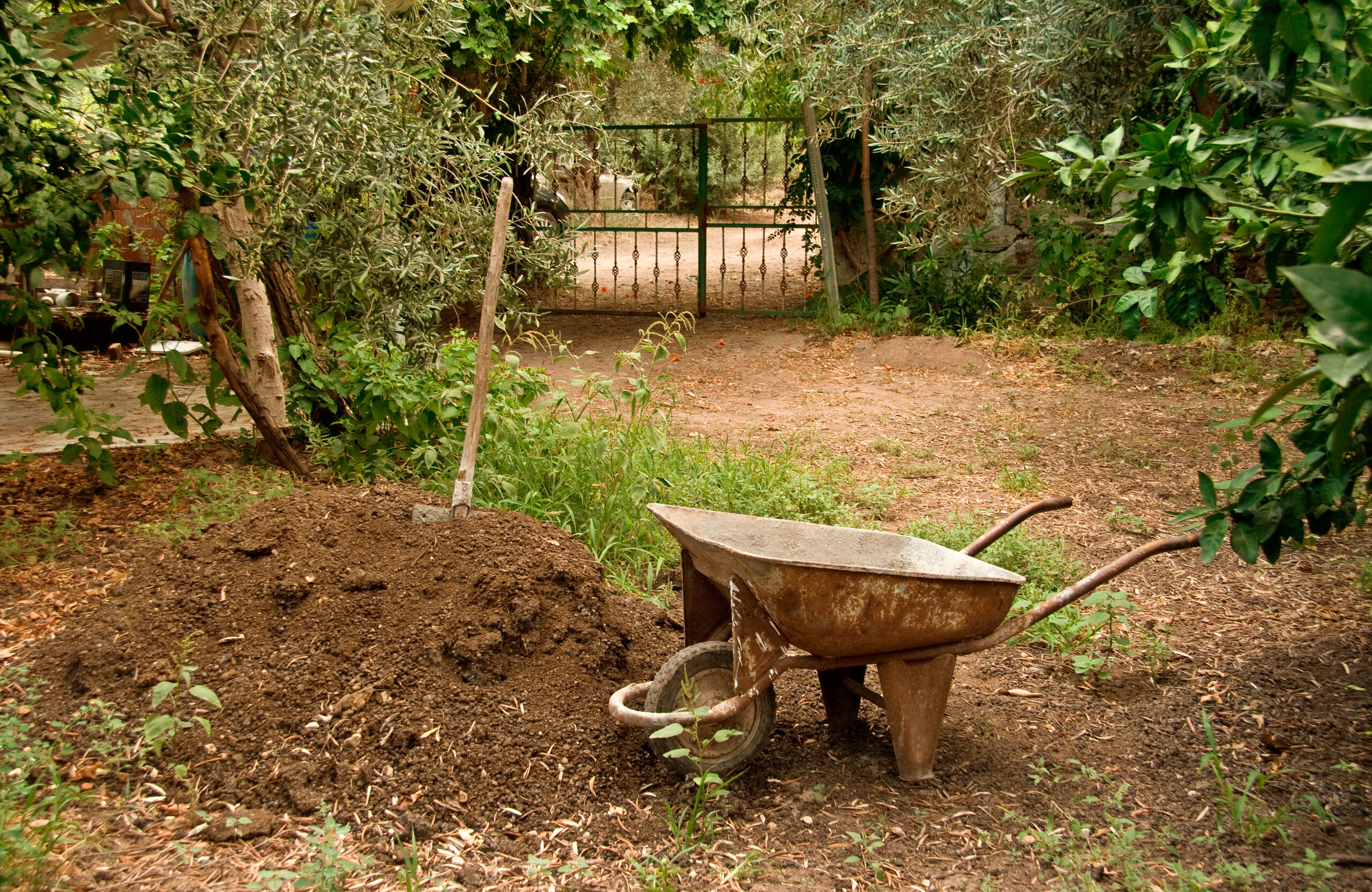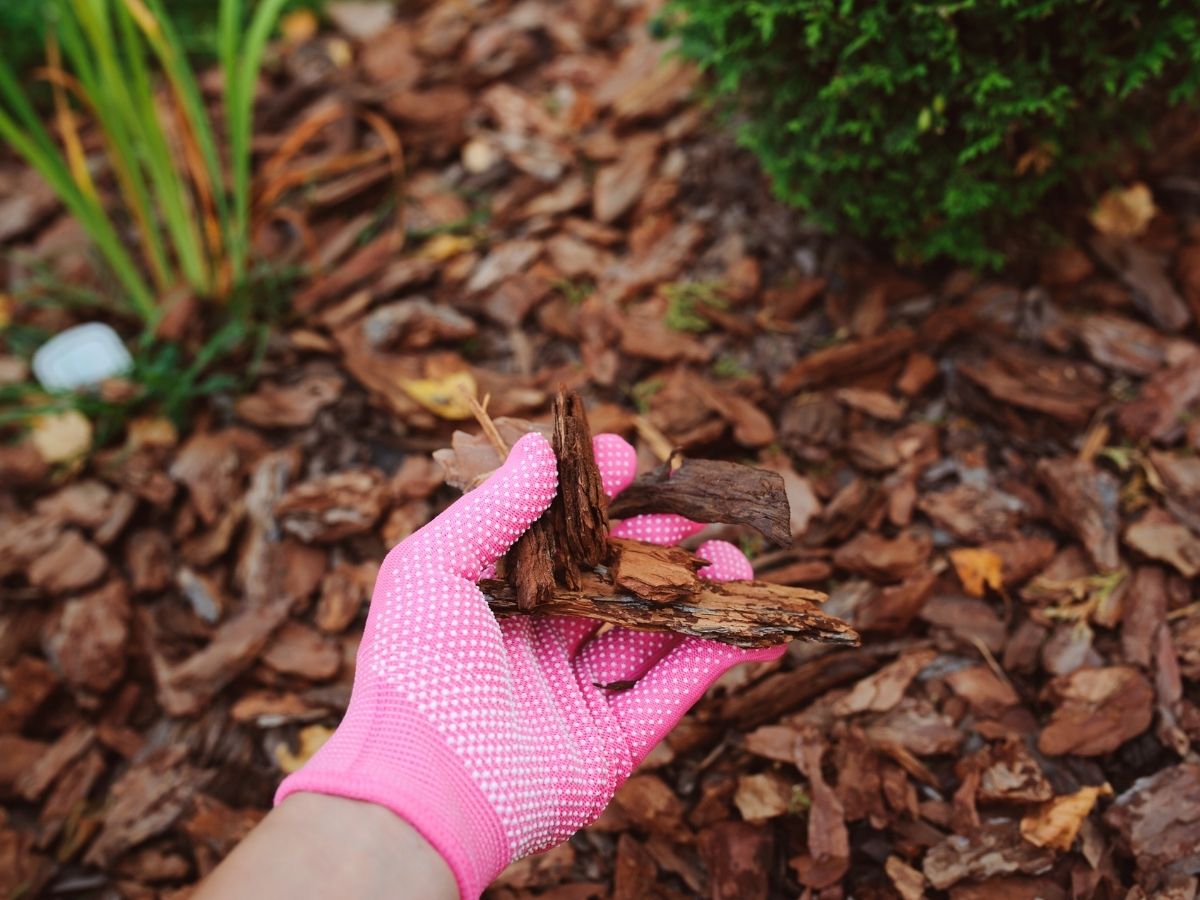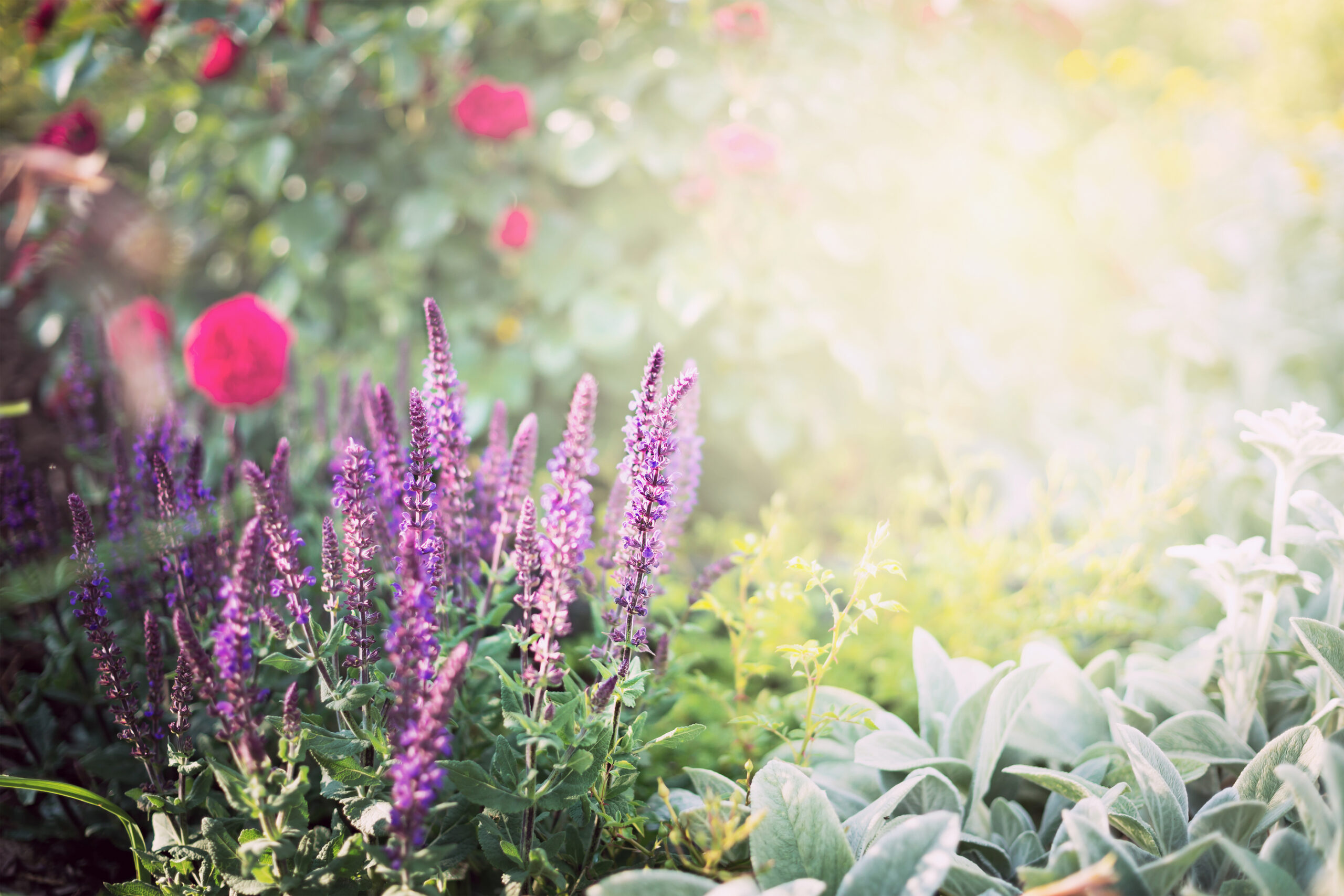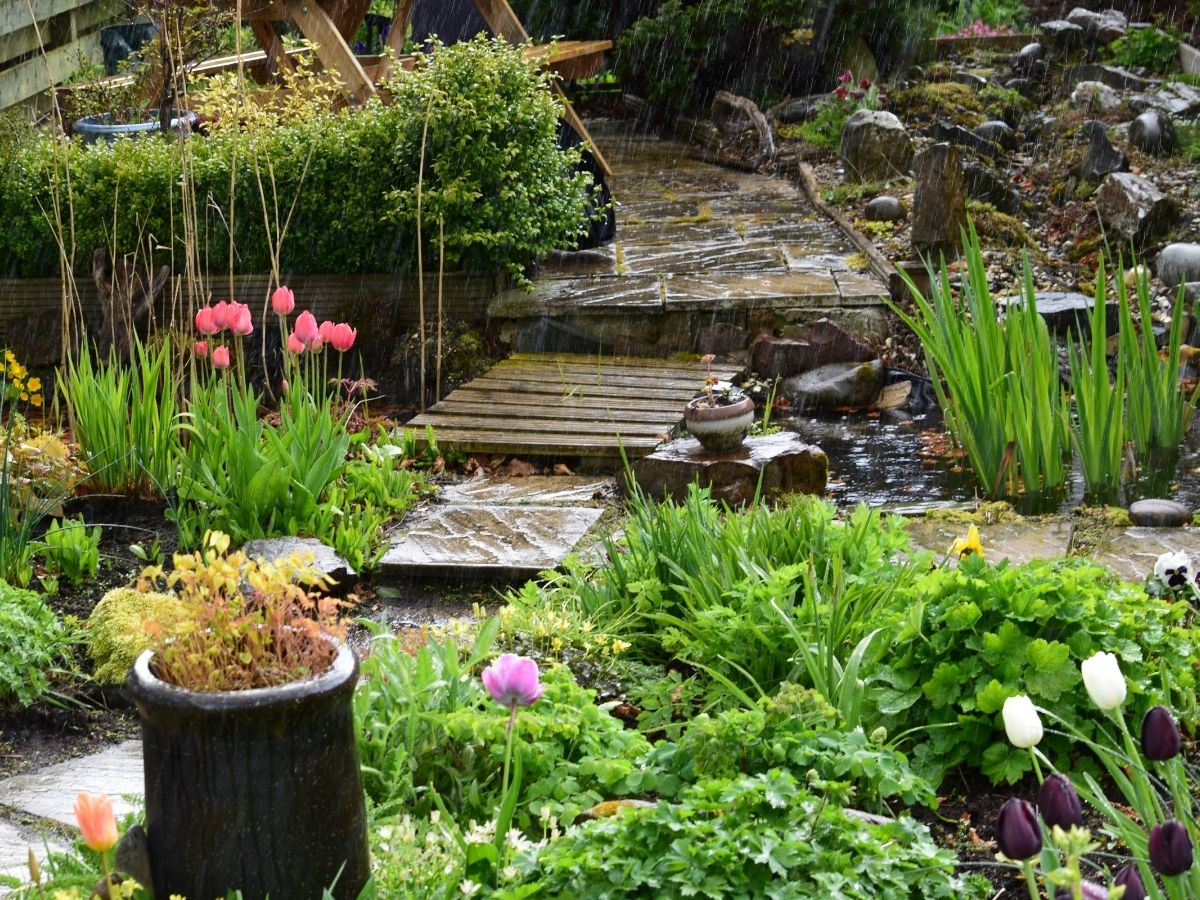At Down to Earth Services, we specialize in using locally grown plants to create pristine natural landscapes for your garden. Have you ever considered a naturescape? Our specialized designers will work with the shape and contours of your outdoor oasis to find the unique natural beauty of your outdoor space. Keep reading to learn more about naturescaping, and when you’re ready to create your own naturescape, call our native plant specialists.
Naturescaping supports local biodiversity and integrates a variety of habitat components that promote the longevity of:
- Wildflowers
- Shrubs
- Native grasses
- Trees
- Ferns
- Hedges
- Wildlife
Comparing a Naturescape vs. Traditional Gardens
Because a locally-sourced selection of plants has spent many millennia becoming accustomed to the local climate, you will find that it is the best choice for your local garden. Here are some of the reasons why:
Less Lawn Care and Landscaping Maintenance
Native plants are part of the natural ecosystem and thrive in their native regions. This means you will have less to worry about when it comes to maintenance compared to plants and flowers that are not native to the area. In addition, local plants are suited to the region they grow in regarding rainfall and sunlight and have ample protection against disease and predators.
Some of the tasks you will minimize with your naturescape include mulching, fertilizing, mowing, and watering.
With resistance to local elements and planted in an ideal environment, a naturescape will flourish with little maintenance, which will save you time and resources.

More Cost-Effective
Locally sourced gardens can also save you money. Trying to support a selection of attractive plants and shrubs in a climate not suited to their type will be costly and inefficient.
Did you know that anywhere from 40% to 60% of your water bill can be related to maintaining a lawn?
However, a natural landscape with plants that have evolved to survive in the local climate will not require such extensive watering as they are suited to the local rainfall.
This means that you could save as much as half of your monthly water bill by working with our native plant specialists.
Naturescapes are Environmentally Friendly
Naturescapes support and promote the local flora and fauna. By applying this natural order to your property, you will find that your landscape will support the life of keystone species, including local insects, birds, and other animals. There has been a considerable decline in the songbird population (5%-10%) because of habitat loss. Creating a naturescape can be an excellent way to restore these lost habitats.
Furthermore, you will not need to use chemical fertilizers and insecticides to protect your plants suited to the area. Additionally, your naturescape will be an added benefit to the beautiful Missouri and Kansas wildlife.

10 Keys to Naturescape Landscaping
Here are ten tips to demonstrate how you can apply the concept of naturescape landscaping in your home and outdoor space.
1. Enhance Your Dirt
Collect disease-free organic vegetable compounds and create a compost where you can start returning health and life to your soil. Taking the time to restore organic substances to the soil is vital to maintaining the health and quality of the soil.
Proper composting provides the following benefits to your soil:
- Improves water infiltration and retention
- Provides plants with the nutrients they need
- Builds up beneficial soil microbes
- Follows nature’s example
When the leaves from your trees fall to the ground, sweep them off paths and walkways, but allow them to collect under shrubs and bushes. This provides all the benefits of mulch without spending a cent.
Mulching provides essential benefits to the soil as well, including:
- Improves moisture retention
- Fights weed growth
- Provides nutrients for plants over time

Take a note of all the things you can compost in your home. This includes some scraps from your kitchen — but no meat, greases, oils, or dairy products. Vegetable matter is always a good option. You can always throw twigs, branches, and plant clippings into the compost.
2. Herbaceous & Woody Plants
You can create an interesting display in your garden by using your local area’s most attractive plant specimens. Include herbaceous and woody plants to help your naturescape garden.
The trees and woody plants will form the bones and structure of your garden, while the limbs, twigs, and branches add a visual framework, provide privacy and shade, and create accent points.
Then you will use the herbaceous plants to add texture and color to the visual display, especially between spring and fall. The texture of the leaves and the colors of the flowers will be critical visual elements.

3. Drifts & Masses
You can create a sense of flow and rhythm by planting in drifts. In addition, planting in drifts means that you will provide visual stimulation by applying slight changes in gradations of color, land topography, form, and texture.
The idea is to create a fundamental order that comes from having massed groups together. For example, you can create a group of similar plants with similar forms, colors, or textures by placing three of a kind together. You can repeat this process throughout your naturescape to achieve the desired effect.
4. Right Plant, Right Place
Begin by assessing the conditions of your garden day in and day out. Which are the areas that get the most sunlight or shade? Which areas have more moisture than others? This information will allow you to plan your naturescape properly.
Once you have a better understanding of the conditions of your property, you can begin to choose the plants that will flourish best. There are other important points to keep in mind, such as spacing. Plants planted too close can cause a threat of disease, while plants planted too far apart may mean unwanted weeds creeping through.
Choose good plants and good plant networks as well. Look for the species of plants that have existed well together and help each other survive. When planted together, these plants increase the potential for survival and will usually complement each other visually as well.

Avoid plants that you have to replace each year and plants not suited for your environment. Plants sensitive to extreme temperatures will have a higher potential for failure. Down to Earth Services is here to help you every step of the way with our expert knowledge and experience with naturescapes.
5. Space Your Plants Wisely
When planning the layout of your plants, give them plenty of room for both root expansion and crown expansion. Proper space will allow your trees and scrubs to reach their full size and promote health and natural fullness.
6. Keep Your Plants to Scale
The smaller the plant, the more specific the considerations for its proper placement. For example, if you are planting in a pot, the plant should not be one that will get taller than the width of the pot. When planting in the ground, if the plant bed is 4-ft wide, the plants should grow no higher than 4-ft.
7. Capture Stormwater on Location
Stormwater collects heat as it flows over asphalt and concrete and can also pick up contaminants, including:
- Heavy metal
- Dust
- Auto oil
- Pesticides
- Fertilizers
- Other debris
When excess water is making its way across your garden, erosion and flooding can result. Furthermore, the contaminants carried in the water can be toxic to plant and animal life.

If the soil you have and the incline of your property allow, you can build a rain garden. This design lets you capture the runoff from less contaminated surfaces like your driveway and roof and direct it through your garden, allowing stormwater to soak into your garden.
9. Encourage microorganisms and beneficial insects
Use plants that protect larvae and their food sources. Avoid chemical-based fertilizers and other soil amendments that can harm the life of microorganisms living in the soil. These tiny animals are essential to the health of the soil and can also prevent diseases in your garden.
10. Mow Your Edges
Finally, for a more manicured look, keeping the edges of your garden clean, trimmed, and well-defined will add a deliberate look to your garden. These care cues go a long way in keeping your garden and property attractive.
Conclusion on Naturescape Landscaping
As you can see, there are plenty of benefits to be found in creating a naturescape. These benefits are as much for you as for the environment. In addition to maintaining an attractive property, you will save money and contribute to a healthy living environment.
When using locally sourced plants to create your naturescape, get creative! Whether you want a more refined look or a touch of wild, be sure to start with a solid design idea. Then, add elements to beautify and balance your landscape. Down to Earth Services is here to create, install and maintain your naturescape. To learn more about the native plant specialists of Kansas and Missouri, contact Down to Earth Services today!

